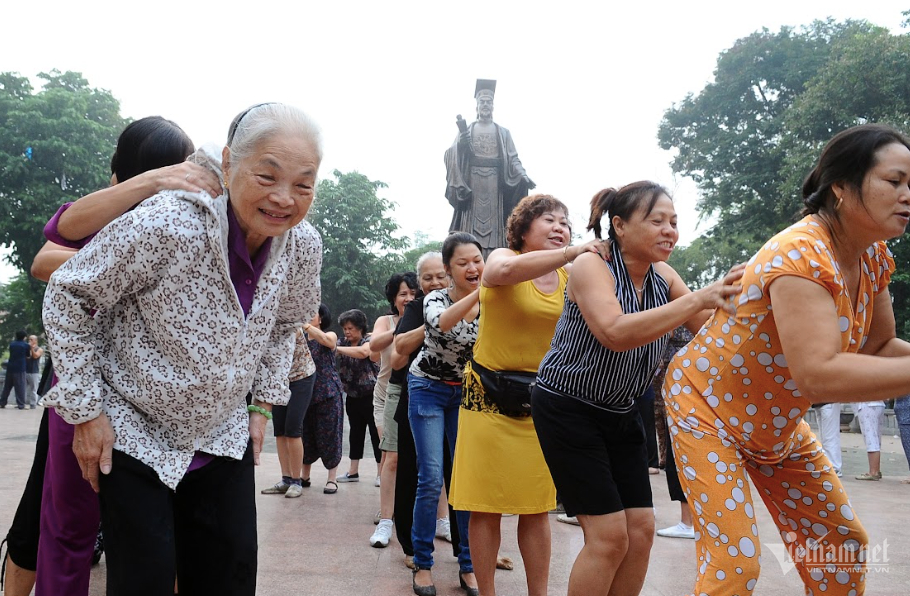
After recently meeting former university classmates, Nguyen Minh Son, 80, walked to the Cat Linh High-speed Railway Station to return home in Ha Dong district in Hanoi.
“I could not imagine that we would be able to meet again 50 years after graduation. Most of my friends remain healthy and have a sound mind."
In the 1960s, when Son graduated from university, the Vietnamese average life expectancy was 45 years. In 2023, the figure was 74.5 as reported by the General Statistics Office (GSO). In 2022, the life expectancy was 0.8 year lower.
With strong socio-economic development, improved nutrition, heathcare access and more awareness of taking care of themselves, modern Vietnamese have a higher longevity rate than previous generations.
However, life expectancy varies in different localities. In the Central Highlands, mid- and highland northern areas, the life expectancy is 72-72.6 years. In the southeast region, and the Red River and Mekong River Deltas, the figures are 75.6-76.3 years.
The life expectancy is over 76 in HCMC, Hanoi, Ba Ria – Vung Tau and Da Nang. Son and his classmates who live in Hanoi and HCM City can easily access high-quality healthcare and regular medical examination to detect diseases for early treatment.
The life expectancy is much lower in Lai Chau (69.8), Kon Tum (69.7) and Dien Bien (69.9). This is attributed to lower living standards in localities and lower access to healthcare services. Also, old-fashioned traditions and habits, smoking and alcohol addictions, plus child and inbreeding marriage are also behind this.
GSO predicted that by 2030, Vietnam will have 17.2 million elderly people, and 27 million by 2049.
Le Thanh Dung, head of the Ministry of Health’s (MOH) Department of Population, said by 2038, there will be one person aged over 60 for every five persons. The proportion of elderly people by that time would be 20 percent.
According to Prof Giang Thanh Long, a senior expert in population and development of the National Economics University, health is just one of three factors for successful aging.
The three factors are described as ‘three legs of a stool’ which determine the quality of aging of every person. The first is health condition, which can be assessed by the presence of disease and disability risks.
The second is financial capability which can be reflected in one’s incomes, stable jobs, savings and social insurance.
The third factor is participation in social and community activities.
Long noted that an elderly man, strong and rich, won’t have successful aging if he doesn’t participate in social activities and the community. And a 60-year-old person with good financial capability, who wishes to meet friends but has underlying conditions and regularly falls sick, will have less successful aging.
In late 2022, the Institute of Medical and Sociological Research with technical support from the Institute of Labor Sciences and Social Affairs and another organization, released a report on "the level of readiness for old age of Vietnamese" after conducting a survey of 2,000 individuals aged 30-44 nationwide, who usuallly have stable jobs and the sharpest increase in incomes.
If noting that they will retire at the age of 60, they have 16-30 years ahead to design a ‘successful aging period’.
The report showed that two thirds of the surveyed people wanted an independent aging period, with no reliance on anyone for health, financial conditions and decisions, but only one quarter of them had planned their aging period. The proportion of people preparing for their retirement period was even lower.
Asked when people should prepare for financial capability in their old age, 22 percent answered when they turn 50 years old or older, while 20 percent said 40 years old or older. Only 14.6 percent said they should prepare at the age of 30.
The figures, according to Long, showed that people are late in getting ready for aging.
Linh Trang